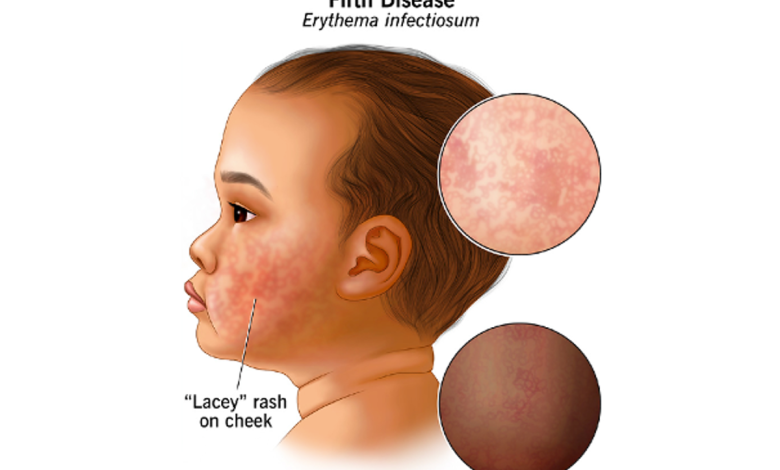Parvovirus: ‘Slapped cheek’ rash-causing virus on the rise among kids, CDC warns

The number of kids with “slapped cheek” syndrome is on the rise and health officials are warning parents about the condition.
The Centers for Disease Control and Prevention issued an advisory this week about human parvovirus. The agency said it had received multiple reports of parvovirus B19 in the United States, particularly among children aged five to nine years.
That age group has seen its positivity rate in tests for the virus jump from 15 percent in 2022 to 40 percent in June 2024.
Commonly known as “slapped cheek disease,” parvovirus B19 is a seasonal respiratory virus that is transmitted through respiratory droplets by people who might show symptoms, or might not. Following the first seven days of infection, children may develop a facial rash with the appearance of their cheeks being slapped.
Adults working in schools and in close contact with children have historically had a high risk of infection. Adults may expereince joint paint that lasts up to three weeks as a result of the virus. It usually goes away without a problem.

The disease is also spreading in other parts of the world. In the first quarter of 2024, public health authorities in 14 European countries observed unusually high numbers of cases of parvovirus B19.
Many people who contract parvovirus B19 are asymptomatic, but children and adults with symptoms usually experience effects in two phases.
In the first phase, when individuals are most contagious, people may experience symptoms of fever, myalgia and malaise that develop about seven days after becoming infected. The first phase lasts about five days.
Symptoms of the second phase include joint pain and a facial rash in children, which could turn into a reticulated body rash that consists of skin lesions configured in a net-like pattern. Adults, too, can develop a similar rash in addition to the joint pain. The rash normally only appears after the infection has started to decline.
Most people who contract the disease will recover and only need supportive care. Severe outcomes such as myocarditis, hepatitis or encephalitis are rare.
There is no current vaccine or specific treatment recommended for parvovirus B19 infection. It’s unclear why there has been a spike in the virus.
The CDC is encouraging the public to learn about the diseases’ symptoms and who may be at higher risk of infection and seek medical care if needed.







